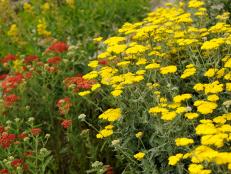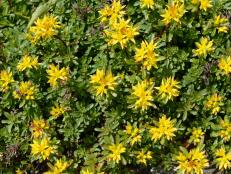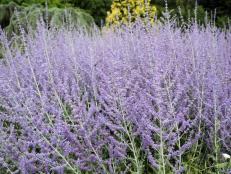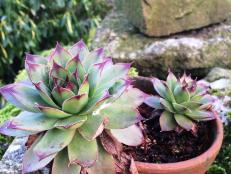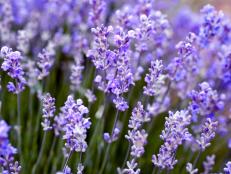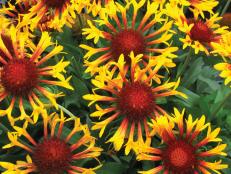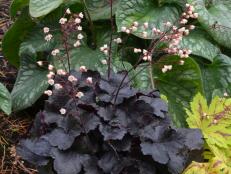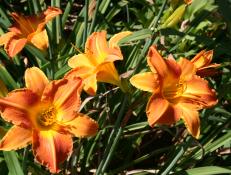Sedum 'Autumn Joy'
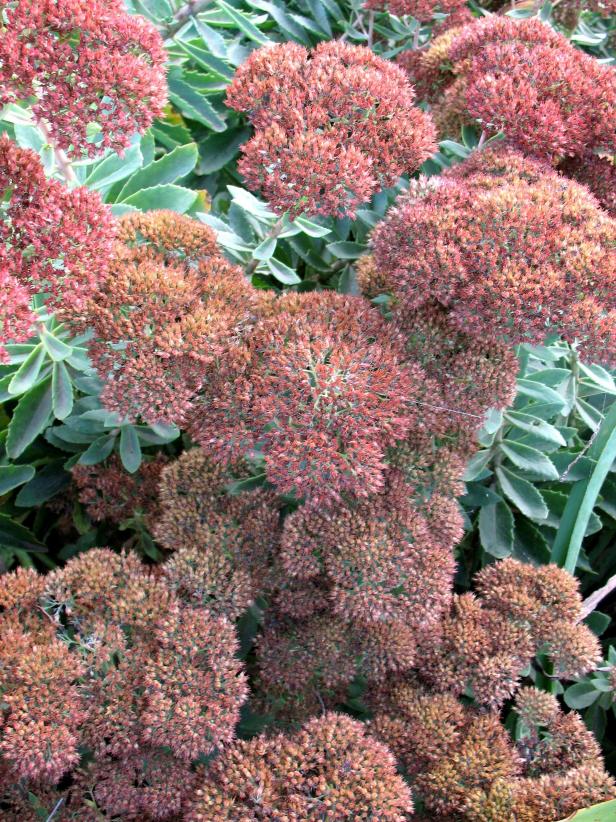
Sedum 'Autumn Joy' is a dependable choice for the late summer and fall garden, offering foliage interest earlier in the season and then putting on a color display of bronze-red flowers in fall.
Ignite outstanding fall color in your landscape beds by tucking Sedum ‘Autumn Joy’ (Sedum spectabile ‘Autumn Joy’) into the mix. Also known as Hylotelephium ‘Herbstfreude’ (Herbstfreude is German for “autumn joy”), this paddle-leafed perennial is tough to beat when it comes to providing seasonal interest. Discover some tips and tricks to growing ‘Autumn Joy’ sedum.
Like other members of the sedum clan, ‘Autumn Joy’ sedum squirrels away water in its fleshy, thickened leaves. This sedum is a type of succulent, related to hen-and-chicks (Sempervivum tectorum) and jade plant (Crassula ovata). All of these plants feature water-hoarding leaves that grow best in soil that’s on the dry side and has poor fertility. A compost enriched garden loam can actually sound a death knell for these water-wise plants.
When ‘Autumn Joy’ sedum is in rich, fertile soil, it responds with lush growth, which results in weak, floppy stems. One of the common experiences gardeners have with this long-season performer is clumps that kick off the growing season tight and upright, but end with bowing and flailing stems. One secret to overcoming stem flop is to keep soil light and lean. Consider adding a shovel of sand to planting holes if you’re tucking plants into rich garden loam.
Another way to keep ‘Autumn Joy’ sedum stems standing soldier straight is to insert hoop or grow-through type stakes around plant clumps early in the season. Stems also flop if plants aren’t in full sun. All sedum plants, including ‘Autumn Joy’ sedum, crave sunshine.
Many gardeners practice spring and summer pruning—cutting ‘Autumn Joy’ stems back—to encourage plants to grow to a shorter overall height. Pruning also creates shorter stems with more branching. To prune sedum, cut plants back by half in late spring or early summer (June in most places). Pruning causes ‘Autumn Joy’ sedum to flower later, which creates a lingering flower show in fall.
‘Autumn Joy’ sedum forms flower buds atop stems in summer. For a long time, the buds are chartreuse, adding interest to the summer garden. In late summer, the green buds open to reveal pink flowers that last about six weeks in the garden. The flowers fade to a bronze color, which ultimately turns an almost chestnut brown that stands sturdily in winter snow. Many gardeners let flowers remain in the garden through winter for visual interest.
The eye-catching flowers beckon all kinds of pollinators. ‘Autumn Joy’ sedum is a great addition to a wildlife or butterfly garden as a late-season nectar source. Its blooms provide wide landing platforms for bees, wasps and other pollinating insects.
‘Autumn Joy’ sedum is hardy in Zones 3 to 8. This fall favorite also comes in several other forms. The traditional ‘Autumn Joy’ sedum opens light pink flowers above green leaves. ‘Autumn Charm’ sedum (Sedum telephium ‘Autumn Charm’) has similar blooms on stems with variegated, white-edged green leaves. ‘Autumn Fire’ (Sedum spectabile ‘Autumn Fire’) is an improved variety of ‘Autumn Joy’. It’s slowly phasing ‘Autumn Joy’ out of the marketplace. Compared to ‘Autumn Joy’, ‘Autumn Fire’ has larger flower heads, stronger stems and a longer flowering window.







